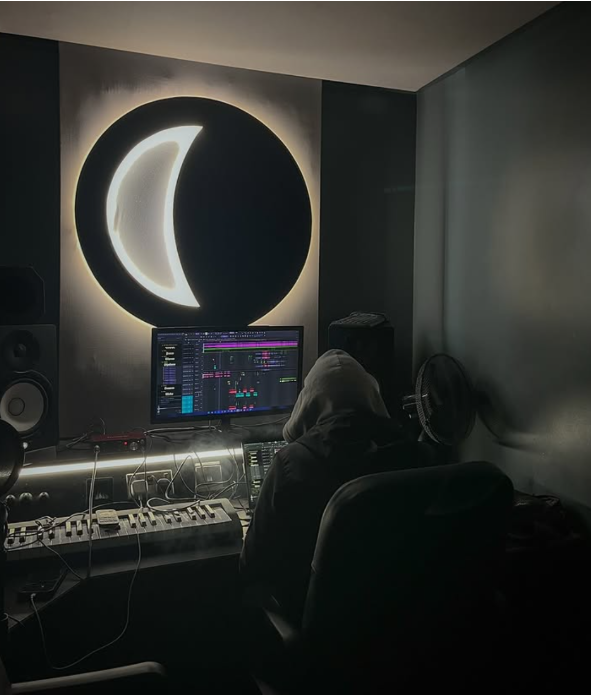
Hasnain Ali
28 Jan 2025
Asian culture has made a powerful impact on the UK music scene, influencing genres, artists, and industry trends.
Over the past few decades, Asian culture has shaped the UK music scene, evolving from niche communities into a mainstream cultural influence. This transformation reflects a unique synergy between traditional South Asian influences and contemporary British music styles. Integrating Asian culture into UK music is more than a trend; It’s a redefinition of identity and a bridge between cultures and generations, driven by artists who are reclaiming their heritage and reshaping the sound, feel and message of British music.
The journey of Asian culture in the UK music began with the rise of Bhangra in the 1970s and 80s, a genre born from the Punjabi relocation. Bands like Alaap and Heera fused traditional Punjabi folk music with some western instruments which created a sound that resonated deeply with second-generation British Asians. Tracks like Punjabi MC’s Mundian To Bach ke would later boost this sound to being recognized on a global scale, showcasing the potential of blending this traditional South Asian sound with Western beats. These pioneers created a soundtrack for a generation and also laid the foundation for future integration of Asian culture into mainstream British music.
New information about the involvement of various ethnic groups in the arts in the UK may be found in recent statistics from the Office for National Statistics. 80% of people of Asian descent participated in the arts at least once at the start of 2024, indicating a significant level of cultural engagement.
This engagement rate is lower than that of the 91% of White people who took part in comparable activities.
Although the Asian community is highly involved in the arts, these numbers indicate that there is a gap when compared to other ethnic groups. As a reminder of the need to keep encouraging and fostering inclusion in the cultural sector, the data also demonstrates the variety of cultural contributions made to the UK’s arts landscape. Understanding these patterns can help recognize the distinctive contribution Asian culture makes to the UK’s artistic scene, particularly in the music industry.
Today, a new generation of Asian artists are setting on their own journey to push these boundaries further, blending traditional South Asian sounds with genres like grime, drill, and hip-hop. Pyro OTB, an 18-year-old producer from Greenwich, South-East London, exemplifies this modern fusion. Speaking with Blimey he said,
“The main unique element in my music is the choice of samples that I use, majority of them reflect my culture and heritage in some form ... whether it’s the song of the sample, the lyrics, the instruments, etc.”
Pyro’s beats tend to reimagine a lot of old Bollywood songs, fusing them with a contemporary edge that appeals to both older audiences who may be familiar with the originals and younger listeners discovering these cultural gems for the very first time.
Similarly, Kami Kane, a 34-year-old artist from Oldham, shares a similar commitment to preserving and showcasing his culture and Punjabi heritage. “My culture is everything”. He says. “If it’s not the chorus and hooks, I introduce some Punjabi rap.” Kami blends traditional elements with Western genres like hip-hop, drill, and R&B.
Despite the progress made by artists like Pyro and Kami, challenges persist. Emjay, a British Pakistani rapper from Manchester, focuses on highlighting the stereotypes that continue to box Asian artists into these narrow categories. Speaking with Blimey he said, “We’ve come a long way, but there’s still work to do. Artists like M.I.A and Steel Banglez opened doors, but a lot of Asian artists still get boxed into stereotypes. We need real representation, where our stories aren’t just a niche but part of the mainstream.”
For Emjay, blending desi traditions like Urdu with grim and UK rap is a way to reflect his life between these two cultures. His songs often feature South Asian instruments like tablas and harmonium, paired with drill beats, creating a sound that is both rooted in his heritage and modern.
One of the biggest challenges that Asian artists are facing is the pressure to innovate whilst staying true to their roots. Pyro OTB recalls his struggle to develop a style that really resonates with audiences. “As an Asian artist, one of my biggest challenges was trying to find a create ideas of unique work that people have never heard but would also love at the same time ... It’s kind of difficult to do when you’re used to one or two specific styles.” Pyro tends to experiment with different Asian samples, he slowly identified what his audience loved, developing a style that sets him apart. However, he took risks to get to this point. “Using Asian samples is genuinely a massive headache,” he admits. “99% of the industry uses samples they don’t have rights for, and eventually, it all does catch up to you, which it did for me one time.”
Navigating the legal complexities of sampling has been a steep learning curve for Pyro, but it has definitely increased his resolve and commitment to his craft.
For Kami Kane, his priority has been building a supportive team that are able to overcome any challenges in the music industry, “Finding producers who don’t trip you off and who put the same energy into songs as you do is tough,” he says. By surrounding himself with like-minded people, he’s been able to focus more on his craft and navigate the music industry with more confidence. His success highlights how important it is to collaborate and have a community that inspires creativity. Asian culture’s influence on UK music represents a bridge between generations. For artists like Pyro, Kami Kane and Emjay, their music is not just a creative outlet but a statement of pride in their roots. As the continue to innovate and inspire, the integration of Asian culture in UK music will continue to shape the sound of the future and solidify its place in the global music landscape.

“Growing up, I didn’t really have an interest in my culture, But as I got older, I started to see how much it meant to my family, and that inspired me to explore it through music.” Emjay also reflects on the challenges of balancing British and Pakistani identities. “Being a British Pakistani rapper isn’t easy, People have set ideas about what you should sound like, and some in our own community don’t see music as a real career.”
Despite these challenges Emjay has remained true to himself and uses his music to tell authentic stories.
As the influence of Asian culture in UK music continues to grow, it’s clear that it is only the beginning. Each beat, lyric, and melody from these artists are paving the way for more a more inclusive and dynamic music industry, where Asian culture is celebrated as a crucial part of the UK’s musical identity.